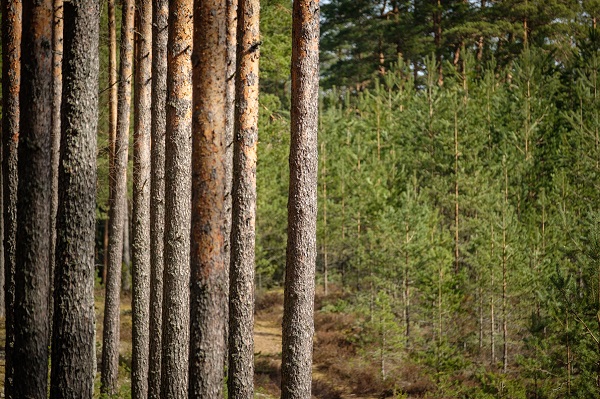Specialists Identify the Effects of Forest Age on Climate Change
Forest ecosystem is an important factor influencing climate, especially when it comes to greenhouse gas emissions. The essence of the climate influence mechanism in this context lies in the ability of trees to capture carbon dioxide in the atmosphere during the process of photosynthesis and to store the carbon contained in CO2 in tree trunks, branches and root system throughout the life of the tree. The carbon sequestered by growing trees in photosynthesis has been “removed” from circulation and no longer contributes to the formation of greenhouse gases that are not desirable for climate.
LVM studies 117 overgrown forest stands
Increasing the carbon stock in a forest requires knowledge of how much carbon is stored in forest stands at different ages, as well as an understanding of the factors that affect this stock. Until now, there was not enough information about carbon storage in old stands, the area of which is growing both in Latvia and in Europe. In order to find answers, JSC “Latvia’s State Forests” and the Latvian State Forest Research Institute “Silava” conducted a study “Assessment of Greenhouse Gas Emissions and CO2 Removal in Old Forest Stands” in 2016–2020. The aim of the study was to evaluate the carbon stock in old or overgrown pine, spruce, birch and aspen forest stands not affected by economic activities in comparison with adult stands and maturing stands.
A total of 117 overgrown forest stands were measured and analysed. The study provided unique European data on the carbon stock in overgrown deciduous trees and significantly expanded the knowledge on this element in overgrown coniferous stands. The information obtained will be an important support in assessing the impact of various strategic and political decisions on the total carbon stock of forests in the ecosystem.
Carbon storage decreases with age
The results of the study show that half of the total carbon stock of the ecosystem in both overgrown (47-59%) and adult (46-54%) stands consists of living tree biomass, which is the largest carbon storage. After the transition from adult to overgrown stands, which averaged 93 years for conifers and 58 years for deciduous trees, carbon sequestration continues in forest stands. The largest additional carbon storage (on average in coniferous stands 61%, in deciduous stands 82% of the total growth) during this period is provided by the increase of living tree biomass, which is formed as the trees continue to grow. Although carbon sequestration in maturing stands continues, the results of the study showed that the annual carbon stock in overgrown stands in living tree biomass and dead wood is significantly lower than in adult stands and maturing stands; moreover, it decreases with increasing age of these stands, even if the species and age trees concerned remain the dominant forest element.
Maturing stands store the largest volume of carbon
Although old forest stands continue to store carbon when forestry activities are not carried out, their preservation after reaching the age of maturity does not ensure efficient use of land resources to maximize carbon stock. To optimize carbon stock, it is important to ensure high stand productivity. The results of the study show that maturing stands have the highest annual carbon stock in both living tree biomass and dead wood. This means that increasing the production of wood products in maturing forests would encourage higher carbon sequestration and long-term storage of wood products, which in turn would reduce the negative impact of CO2 on climate.



